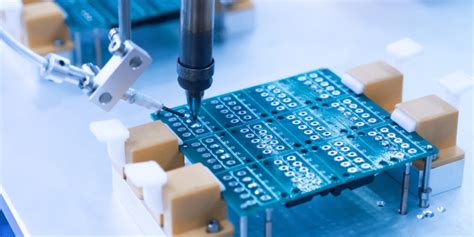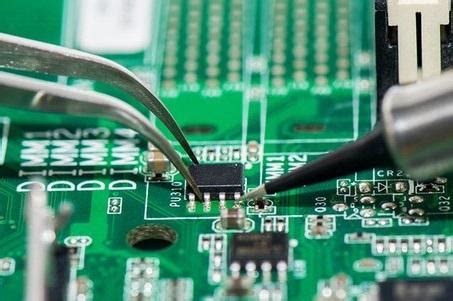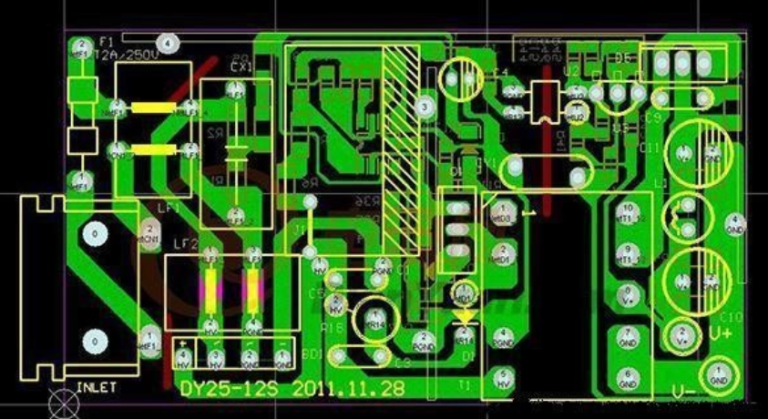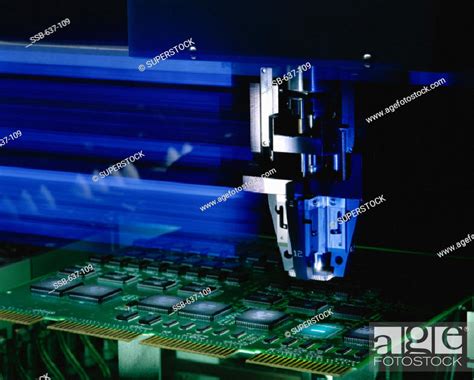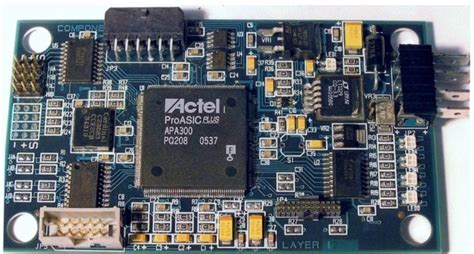Mastering Circuit Board Design and Manufacturing: A Comprehensive Guide
Key Takeaways
When engaging in pcb manufacturing, understanding the essential elements that contribute to a successful project will significantly enhance your outcomes. To navigate the complexities of this industry, you need to familiarize yourself with the role of pcb manufacturing companies, which often bring extensive expertise and resources to the table. By collaborating closely with these companies, you can streamline the pcb manufacturing process and reduce overall costs. It’s crucial to consider the pcb manufacturing cost at every stage—from design through production—to ensure that your budget aligns with your project goals. This can often mean optimizing your designs for manufacturability, minimizing waste, and selecting materials that both meet safety standards and contribute positively to your overall performance. As you delve deeper into this field, recognizing future trends and aligning them with your pcb manufacturing business can lead to innovative solutions and sustainable practices that elevate your products above the competition. Prioritizing effective communication throughout this process can prevent common pitfalls, helping you achieve high-quality results that satisfy both technical specifications and market demands.
Mastering Circuit Board Design: Key Principles
Mastering circuit board design can be a challenging yet rewarding endeavor. Understanding the nuances of pcb manufacturing is crucial for creating efficient and reliable products. You must consider multiple factors, starting from the initial concept to the final production. It is essential to engage with established pcb manufacturing companies that offer a wealth of resources and expertise to guide you through this process.
One key principle is understanding Design for Manufacturability (DFM). This approach allows you to anticipate and address imperfections early on, ultimately lowering your pcb manufacturing cost. Make sure to utilize tools that help simulate manufacturing outcomes; doing so can lead to significant savings and improved design cycles.
| Principle | Description |
|---|---|
| Understanding DFM | Incorporating design choices that facilitate easier production, reducing costs and lead time. |
| Optimal Material Selection | Choosing materials that enhance performance while adhering to budget constraints can be beneficial. |
| Effective Communication | Foster open lines of dialogue with manufacturers to streamline the production process effectively. |
“Prioritize DFM early in your project.” This foundational concept will help set the stage for an efficient pcb manufacturing business, ensuring that your designs are both manufacturable and cost-effective.
By enforcing these guidelines, you not only improve your design’s integrity but also enhance collaboration with your chosen pcb manufacturing companies, leading to higher quality products tailored for market demands. Embracing these best practices ensures that you remain competitive in a fast-evolving technological landscape, ultimately leading you toward greater success in your circuit board ventures.
Understanding Design for Manufacturability (DFM)
Design for Manufacturability (DFM) is a crucial process in the realm of PCB manufacturing, as it directly influences the efficiency, cost, and quality of your final product. When you incorporate DFM principles into your design workflow, you aim to simplify and enhance the manufacturability of circuit boards, which can significantly improve the outcomes produced by PCB manufacturing companies. By focusing on practical design considerations—such as component placement, trace width, and layer stacking—you minimize potential issues that could arise during production. This proactive approach not only streamlines processes but also helps in keeping the PCB manufacturing cost within budget.
Understanding customer requirements and specifications from the outset is essential in shaping your PCB manufacturing business strategy. Knowing which components are easier to source or which designs may need more complex assembly will allow you to make informed choices that bolster manufacturability while still satisfying your project goals. Moreover, consistent communication with your chosen PCB manufacturing company can lead to valuable insights that further refine your designs. Emphasizing DFM principles ultimately translates into a more reliable path from concept to completion, directly benefiting both you and the end-users who rely on efficient and high-quality circuit boards.
Best Practices for PCB Layout Optimization
When delving into PCB layout optimization, it’s essential to consider several best practices that can significantly enhance the efficiency and functionality of your designs. Start by ensuring a balanced distribution of components across the circuit board. This not only optimizes space but also aids in heat dissipation, which is crucial for maintaining performance. Furthermore, pay attention to trace routing; shorter, direct paths can reduce resistance and electromagnetic interference, leading to more reliable signal integrity. Prioritize ground planes to minimize noise and stabilize your circuits.
Additionally, using an appropriate layer stack can streamline the PCB manufacturing cost, as multilayer boards often allow for more complex designs without excessive spacing or trace congestion. Before finalizing your design, perform thorough simulations to anticipate potential issues that might arise during production. This foresight is invaluable as you work with various PCB manufacturing companies to ensure readiness for mass production.
Finally, always maintain open lines of communication with your chosen PCB manufacturing business throughout the process. Engaging proactively with these companies ensures that your design aligns with their capabilities, potentially reducing costs and accelerating timelines. By adhering to these practices, you not only optimize your PCB layout but also create a more efficient bridge between design expertise and manufacturing excellence. Remember, consistent attention to detail in these areas can drastically influence overall quality and performance in the final product.
Material Selection for High-Quality Circuit Boards
When it comes to pcb manufacturing, selecting the right materials is crucial for achieving high-quality circuit boards. You should consider factors such as thermal conductivity, dielectric properties, and mechanical strength when deciding on materials. Various options are available, ranging from traditional FR-4 to advanced polyimides, each with its distinct advantages and pcb manufacturing cost implications. Opting for the right material not only impacts the performance of the circuit board but also affects the overall efficiency of the pcb manufacturing business. You will find that collaborating with reputable pcb manufacturing companies can provide insights into material selection that aligns with your project’s requirements. Remember, using materials that are optimized for your specific application can significantly reduce errors during production and contribute to a more streamlined design for manufacturability (DFM). By prioritizing proper material selection, you enhance both the durability and functionality of your final product, ultimately setting your project up for success in a competitive market.
Troubleshooting Common PCB Design Issues
When embarking on the journey of PCB manufacturing, encountering design issues is inevitable. However, knowing how to address these challenges can streamline your efforts and enhance the quality of your final product. One common issue pertains to trace width; inadequate width can lead to overheating and compromise the integrity of the circuit. As you work with PCB manufacturing companies, ensure that you adhere to current industry standards for trace widths based on current loads. Another frequent challenge is signal integrity, which can be adversely affected by poor routing and inadequate spacing between components. Utilizing effective design for manufacturability (DFM) practices during this stage can minimize these problems and reduce PCB manufacturing costs. Pay attention to the layout and ensure that components are strategically placed to reduce interference, optimizing performance across your board. Additionally, consider engaging with a reputable PCB manufacturing business that specializes in troubleshooting design issues; their insights could provide invaluable solutions tailored to your specific needs. Implementing regular checks throughout the design phase is crucial, as this proactive approach can help you identify and resolve problems before they escalate into costly mistakes in later production stages.
Effective Communication Between Designers and Manufacturers
In the pcb manufacturing realm, the relationship between designers and manufacturers is crucial to achieving high-quality results. Effective communication can significantly influence the pcb manufacturing cost and overall efficiency of your project. Clear, proactive dialogue enables designers to convey their visions accurately, while manufacturers can provide valuable insights regarding feasibility and constraints. When engaging with pcb manufacturing companies, ensure you ask pertinent questions about capabilities, lead times, and potential challenges to streamline the production process. By outlining specific expectations regarding design elements, such as material choices and performance standards, you not only foster collaboration but also minimize the risks of costly revisions later on. As you navigate through your pcb manufacturing business, remember that open lines of communication can lead to innovative solutions and enhanced product quality, ultimately providing a competitive edge in this dynamic industry.
Testing and Compliance Standards in PCB Production
In the realm of PCB manufacturing, ensuring that your designs meet stringent testing and compliance standards is paramount. This process not only validates the functionality of your boards but also guarantees that they comply with regulatory requirements. As you navigate through pcb manufacturing cost considerations, understanding various testing protocols can significantly influence your decision-making and overall product quality. You’ll want to collaborate closely with pcb manufacturing companies that prioritize rigorous testing methods, including electrical, thermal, and environmental assessments. These tests help identify potential flaws early in the process, potentially saving you from costly revisions later on in your pcb manufacturing business. Employing standardized compliance measures, such as IPC standards, ensures that your products can withstand real-world challenges while maintaining performance and reliability. By prioritizing these aspects during the production phase, you can optimize both efficiency and quality—critical factors in today’s competitive landscape.
Future Trends in Circuit Board Manufacturing
As technology continually evolves, the landscape of pcb manufacturing is undergoing significant transformations. You may find that the demand for more complex designs is increasing, pushing pcb manufacturing companies to innovate and adopt advanced techniques. One notable trend is the rise of automation in pcb manufacturing, which enhances productivity while reducing labor costs. This shift allows manufacturers to maintain competitive pricing despite rising pcb manufacturing costs. Additionally, you will see a growing emphasis on sustainable practices within the pcb manufacturing business. Eco-friendly materials and processes are not just beneficial for the environment; they are also becoming a priority for consumers who favor products that align with their values. To stay ahead, it’s essential to keep an eye on these trends and consider how they can impact your designs and overall project efficiency in the exciting world of circuit board design and manufacturing.
Conclusion
In the realm of PCB manufacturing, understanding the nuances of the design and production process is crucial for achieving success. You may have engaged with various PCB manufacturing companies to explore options, yet knowing how to effectively manage your expectations regarding PCB manufacturing cost can significantly influence your decision-making. Focusing on a solid foundation in design for manufacturability (DFM) can help you minimize errors and streamline production, ultimately leading you to a more efficient PCB manufacturing business. As you refine your skills in circuit board design, remember that attention to detail and proactive communication with manufacturers will serve as cornerstones of your success. Embracing these principles allows you to not only enhance the quality and performance of your final product but also ensures that you remain competitive in a rapidly evolving industry.
FAQs
What is the significance of DFM in pcb manufacturing?
DFM, or Design for Manufacturability, plays a crucial role in pcb manufacturing as it optimizes the design processes to reduce costs and improve product quality. By implementing DFM principles, you ensure your PCB is easier and more cost-effective to manufacture, resulting in lower pcb manufacturing costs.
How can I choose the right pcb manufacturing companies?
When selecting pcb manufacturing companies, consider their reputation, capability to handle your specific requirements, and customer reviews. It’s also beneficial to inquire about their processes regarding quality assurance and DFM practices. A reliable company will ensure your project runs smoothly from design to production.
What factors influence the overall pcb manufacturing cost?
Several elements can affect the total pcb manufacturing cost, including material selection, complexity of the design, and production volume. Custom features or stringent quality requirements may also increase expenses. It’s essential to balance quality with budget when discussing project specifications.
What should I know before starting a pcb manufacturing business?
Before launching a pcb manufacturing business, you should familiarize yourself with industry standards, potential client expectations, and advancements in technology. Additionally, having a solid understanding of both the design process and manufacturing techniques will help establish a competitive edge.

